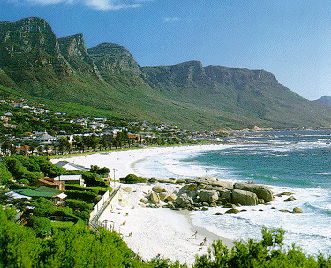
Ghana
Beautiful African country


Sustainable Development
On the other hand, public environmental regulatory bodies have also failed to carry out their functions due to inadequate resources and poor institutional collaboration. Despite the contributions of mining in the economy, its negative effects especially on degradation of environment are exaggerated. The mining has negative effect on environment and is necessary create actions for mitigate their harmful effects. The mining is an activity getting more destructive, in prohibited areas such as forest, areas close to rivers, water bodies, residential areas and other public infrastructure, mining activity in such areas is considered illegal. But, is an activity that yet is presented.




Mining
Mining in Ghana has a long history; it has existed as the main economic activity in this country. The ban on mining was in 1989 by passing Small Scale Mining Law. Mining has contributed to production of gold in Ghana and creation of employment for the unskilled labor force in rural areas of Ghana. The industry of mining has several negative effects on environment, but though the risk to life and environment is equally high yet mining activities continued.



Published by: Magda Angélica Flórez Avendaño

Wildlife in Ghana
Ghana has two predominant ecological zones:
-
The high forest zone mainly in the south-western part constituting a third of the country (about 34 percent of the country) and the savannah zone occupying the rest of the country.
-
The Forests are classied as on-reserve and off-reserve and there are 282 Protected Areas covering a total area of 22,754 km2 with 216 of them located within the high forest zone.
Forest and wildlife conservation areas constitute about 16.2 percent of the total land area. Two types of forest reserves exist
-
Production reserves exploited for timber (about 80 percent)
-
Protection reserves (about 20 percent) established for conservation purposes.
The biological diversity of the high forest ecological zone is considerable and accounts for most of the biological diversity of the country. For example, out of 3,725 higher plants known to be in Ghana, about 2,300 are found in the high forest zone, including 730 tree species. Similarly, 185 of the 225 mammals of Ghana and about 200 of the 724 resident birds in Ghana are present in the high forest zone. Amphibians, reptiles and shes have not yet been systematically surveyed in the forest zone but it is assumed that this zone harbours most of the diversity of these groups.
In terms of economic contribution, forestry and logging accounted for 3.7 percent of GDP in 2009 and contributed US$240.9 million (representing 7.6 percent) to total export value. It is estimated that about 120,000 people are formally employed by the forest and wildlife sector, and it serves as a source of livelihood for about 2 million people. ere are 84 sawmills and 12 companies with plywood capacity in the formal sector, directly employing about 120,000 people.
The policy objective of promoting the export of less volume high value products was under stress as the export volume of furniture and furniture parts continued to decline. Raw material supplies to the tertiary processing subsector were mostly from illegal sources with low quality wood.
Other issues and challenges confronting the forest and wildlife sector include the following:
-
The inadequacy of the Policy to respond adequately to domestic demand for timber and timber products to match the massive domestic investmen in infrastructural development in the country. The past policy was exportoriented and failed to address domestic utilization of timber products.
-
The Forestry Commission has not fully developed its capacity for properly managing the forests and wildlife resources. Due to broader environmenta responsibilities it receives a large part of its budget from international funding and draws its salaries from the government. Morale is generally low due to unaractive remuneration and reward systems.
-
Natural resources are still perceived as public goods, which are free of charge and of unrestricted use both in the high forest and the savannah ecosystem. Primary as well as secondary users have resisted changes and are slow in adopting sustainable management practices.
-
There is poor accountability in resource exploitation and lack of costeefectiveness in the use of resources and creation of appropriate benets in a transparent and accountable manner. More than 1.7 million cubic meter of timber.
 |
|---|
 |
 |
 |
 |
 |
 |
 |
 |
 |
 |
 |
 |
 |
 |
 |
Published by: Leidy Paola Triana
Ghana has two thirds of the northern part of the country are covered by savanna. Animal life has also been greatly reduced, especially in the south, but is still relatively diverse and includes leopards, hyenas, lemurs, buffalo, elephants, antelopes and monkeys. You can find many species of reptiles such as cobra, python and the horned viper.
The main natural resources of Ghana are gold, silver, iron ore, manganese, bauxite and diamonds. Forest resources are important and coastal waters are rich in fish. Other minor resources are oil, natural gas, beryllium and chromium.
Ghana is the third largest producer of cocoa. They have eliminated large areas of forest to grow cacao, which grows well in the rich soil of the rainforest. In times of falling prices of cocoa, Ghana has significantly increased timber exports to generate the necessary revenue.
In 1988, Ghana launched a conservation program called Project for the management of Forest Resources. In 1989, the export of 18 tree species was restricted, and in 1994 the country banned the export of raw logs. Approximately 14.7% (2007) of its territory is officially protected, but illegal logging threatens the forests of Ghana.
Natural resources in Ghana.


Published by: Sergio Calderón González